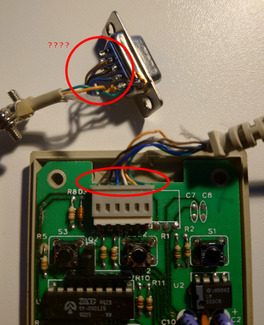First post, by aknot
Hello,
Found a 3 button "Genius Mouse GM6" which originally was with DB25 connector which was replaced to DB9. Mouse is not working and I'm not sure if issue is related to wrong soldering or it's just dead.
Does someone have such mouse and could specify which DB25 pinout corresponds to which color? Like: brown is pin 1 of DB25, green is pin 2 etc.
Now on DB9 it's: 5 - orange, 4 - blue, 3 - black, 2 - brown, 7 - white, ground - green. Green and orange are shorted.
Thanks!
